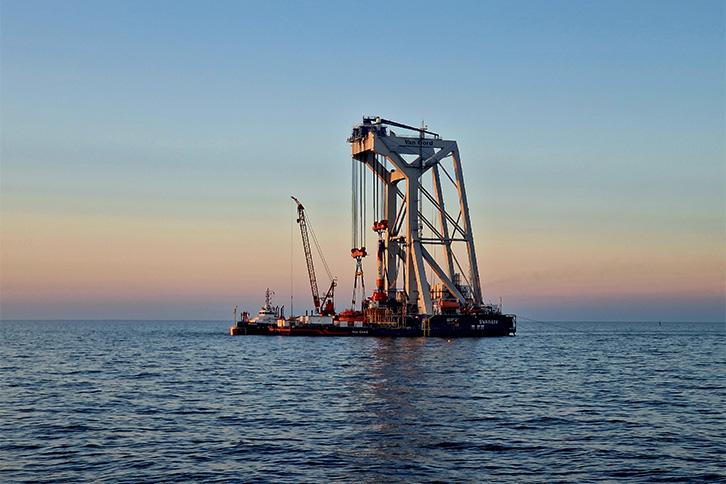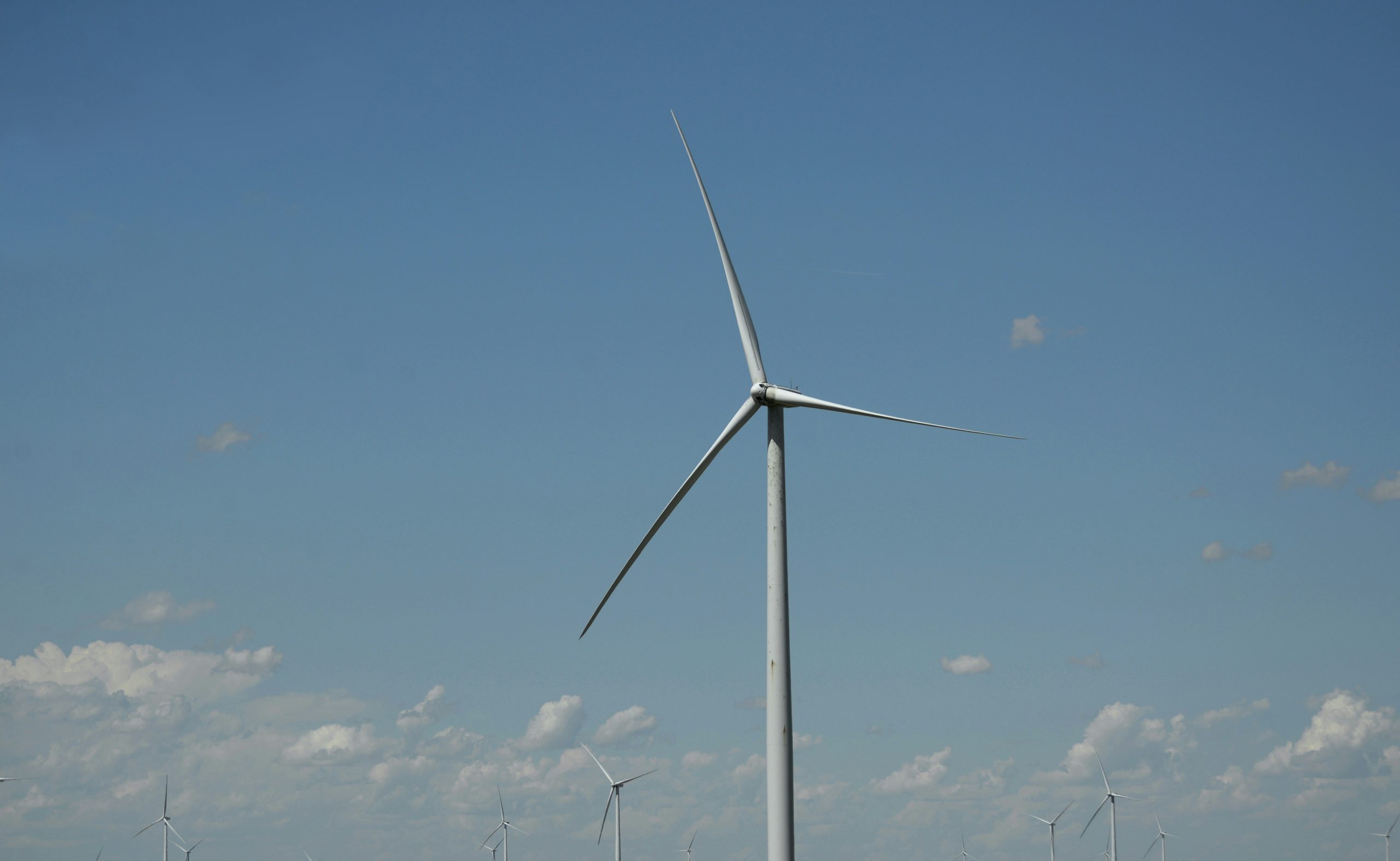Iberdrola has successfully installed all fifty monopiles for the Baltic Eagle offshore wind farm together with its partner Van Oord. The next step in the ongoing construction phase now involves the installation of the transition pieces. These were manufactured by the Spanish company Windar Renovables and temporarily stored in the port of Mukran. The transition pieces are the connecting element between the monopile and the tower of the wind turbine. The installation of the wind farm’s internal cabling by Van Oord is planned for the end of 2023.
The construction of Baltic Eagle is proceeding according to plan
The monopiles were made by the Rostock-based company EEW SPC. Afterwards, they were transported floating from the port of Rostock to the Baltic Eagle offshore construction field. They were then positioned with the help of Van Oord’s heavy-lift installation vessel Svanen. The monopiles with a diameter of 8.75 to 9 metres and a length of between 75 and 90 metres were then driven into the seabed. They ensure that the wind turbines are securely anchored in the seabed.
“With the installation of the monopiles, we have reached another key milestone in the construction of Baltic Eagle,” commented Iris Stempfle, Managing Director of Iberdrola Germany’s Offshore Division. “Above all, I would like to thank the responsible teams very much for their unremitting efforts. Everyone went the necessary extra mile to be able to successfully complete this intensive project phase.”
The monopiles were manufactured in Rostock by the company EEW SPC. Above all, direct access to the German Baltic Sea enabled the uncomplicated transport to the wind farm. The international companies involved in the construction of Baltic Eagle have production facilities in five European countries, including Germany, Spain, Denmark, the Netherlands and Belgium.
Iberdrola’s Baltic Hub
With a production capacity of 476 MW, Iberdrola’s Baltic Eagle offshore wind farm will supply approximately 475,000 households with renewable energy while reducing CO2 emissions by approximately 800,000 tonnes per year. The park is scheduled to be fully operational by the end of 2024. Baltic Eagle is the second of three large-scale projects in Germany. Iberdrola already operates the 350-MW Wikinger wind farm and is developing the 300-MW Windanker project, which will be completed in 2026. Together, these offshore wind farms form Iberdrola’s so-called Baltic Hub. It will have a total capacity of more than 1.1 GW in 2026, with combined investment of around 3.7 billion euros.
Iberdrola Deutschland’s integrated growth strategy
The Baltic Eagle offshore wind farm is an important component in the integrated growth strategy that Iberdrola is pursuing in its German core market. In the area of sustainable energy solutions, the company aims to cooperate with key players in the German economy to support them in achieving their climate targets with market-based solutions. A core element here is the integration of PPAs into a modern electricity supply portfolio and the development of projects in the area of green hydrogen generation and trading.
In Germany, Iberdrola has brought all its business activities under the wholly owned subsidiary, Iberdrola Deutschland. The company, headquartered in Berlin, is the largest operator of offshore wind farms in the German Baltic Sea. With its offshore and onshore business divisions, Iberdrola Deutschland is active in the planning, construction and operation of offshore and onshore wind farms as well as photovoltaic projects. The company offers its industrial and commercial customers tailor-made solutions for the supply of green energy, from the classic supply of electricity including portfolio management services, to long-term PPA contracts linked to Iberdrola’s own renewable energy facilities, to PV solutions for on-site self-consumption. Iberdrola Deutschland also provides cross-technology integrated solutions, such as battery storage or green hydrogen production for industrial use.
Source: Iberdrola
















